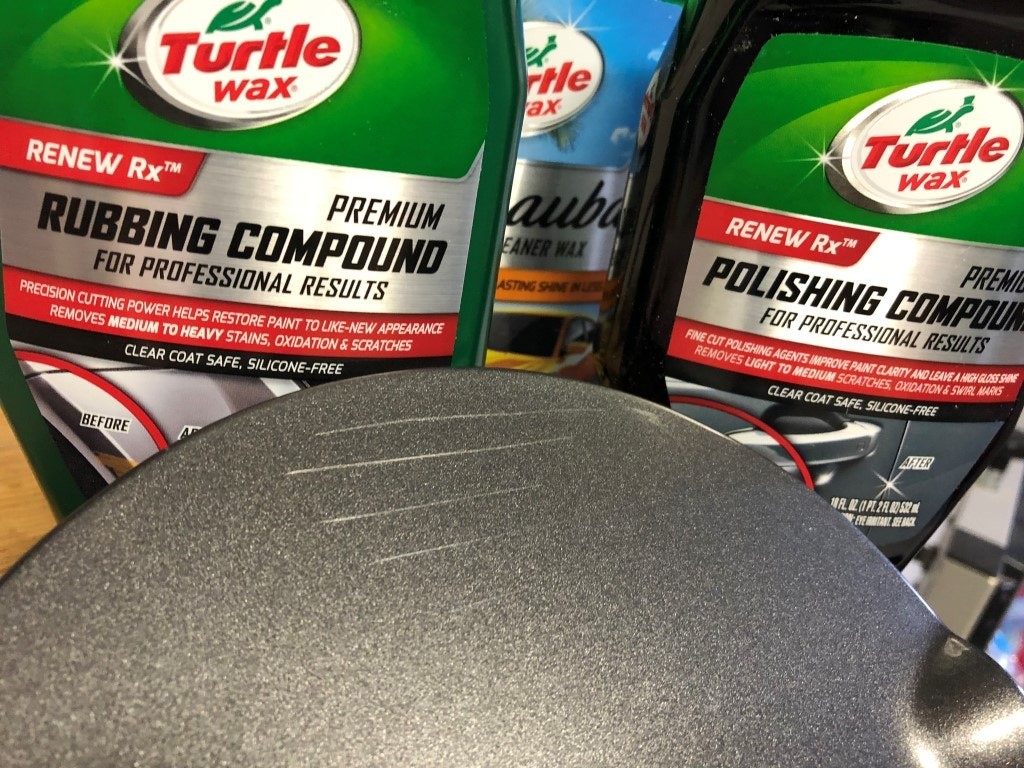Car scratches are an unfortunate reality for vehicle owners. Whether it’s a minor scrape from a bush or a deeper gouge from an unknown source, scratches can detract from your car’s appearance and value. Fortunately, fixing car scratches at home is often achievable, saving you time and money compared to professional auto body shop repairs. This guide will walk you through various methods on How To Fix Car Scratches, from simple solutions for light blemishes to more involved techniques for deeper damage. We’ll explore different products and approaches to help you restore your car’s finish and keep it looking its best.
Dealing with car scratches can be frustrating. Before diving into complex repairs, it’s important to assess the type of scratch you’re dealing with. Superficial scratches, often called clear coat scratches, only affect the top layer of your car’s paint and are usually the easiest to fix. Deeper scratches, however, can penetrate through the clear coat and even reach the color coat or primer, requiring more intensive repair methods. Identifying the depth of the scratch is the first crucial step in learning how to fix car scratches effectively.
For very minor surface scratches, sometimes all you need is a bit of elbow grease and the right product. Many swirl removers and polishing compounds are designed to address these light imperfections. These products work by gently abrading the clear coat, leveling out the edges of the scratch and making it less visible. Think of it as smoothing out a tiny wrinkle in the paint. Products like Turtle Wax Scratch & Swirl Remover are formulated for these types of minor blemishes. In tests, these lighter compounds can be effective at minimizing the appearance of very faint scratches, especially when viewed from a distance. However, it’s important to manage expectations; for anything beyond the most superficial marks, these products alone may not provide a complete solution.
Alt text: Turtle Wax Scratch Repair Kit results on car panel showing minimal scratch reduction, demonstrating limited effectiveness for deeper scratches.
Moving up in intensity, polishing compounds offer a slightly more abrasive approach to how to fix car scratches. These compounds are designed to remove a thin layer of clear coat, effectively leveling out minor to moderate scratches. Meguiar’s Ultimate Compound is a popular choice in this category, known for its ability to tackle slightly more pronounced scratches compared to swirl removers. When applied by hand, polishing compounds can yield marginally better results. However, for noticeable improvement on anything beyond very light scratches, manual application might still be insufficient. The key takeaway here is that while these products are a step up, significant scratch removal often requires mechanical assistance.
For more effective scratch repair, especially on moderate scratches, using a machine polisher can make a significant difference in how to fix car scratches. Tools like the Meguiar’s DA Power System, which attaches to a standard drill, provide the necessary power and consistent motion to work polishing compounds more effectively. The orbital motion of these systems ensures even coverage and reduces the risk of damaging the paint. With machine application, polishing compounds can more effectively diminish the appearance of light scratches, making them virtually disappear. While moderate and deeper scratches might still be visible, the improvement is substantial compared to hand application alone.
Alt text: Car panel after machine polishing with Meguiar’s DA Power System, showing a noticeable reduction in scratches and improved paint clarity.
When polishing isn’t enough, particularly for scratches that are deep enough to be felt with a fingernail, more aggressive methods are necessary to learn how to fix car scratches. This is where sanding comes into play. Sanding might sound intimidating, but it’s a crucial step for effectively leveling deeper scratches. The 3M Trizact Precision Scratch Kit exemplifies this approach, incorporating sanding as a key component of scratch repair. This system involves initially sanding the scratched area by hand with specialized sandpaper. This process physically removes a small amount of clear coat, directly addressing the depth of the scratch. It’s essential to use wet sanding techniques to minimize friction and heat, protecting the paint. While sanding will initially leave the area looking hazy and matte, this is a necessary step to remove the scratch effectively.
Following sanding, the 3M system utilizes a rubbing compound applied with a drill attachment to buff out the sanding marks and restore clarity. Finally, a polishing step with another drill attachment refines the finish, bringing back the shine and gloss. This multi-stage process, combining sanding with compounding and polishing, proves to be significantly more effective for moderate scratches. While even with sanding, the deepest scratches might still be somewhat visible, the overall improvement is dramatic. The 3M Trizact system demonstrates that for meaningful scratch repair on anything beyond the most superficial level, sanding is often an indispensable step in how to fix car scratches.
Alt text: Car panel after scratch removal using 3M Trizact system, demonstrating significant scratch reduction but slight visibility of deeper scratches remaining.
For the most severe car scratches, those that penetrate deeply into the paint layers, a more comprehensive approach to how to fix car scratches is required. These deep scratches often necessitate filling the scratch with touch-up paint or a filler like Bondo before sanding and polishing. This process involves carefully applying touch-up paint to the scratch, layer by layer, allowing each layer to dry completely. Alternatively, for wider or deeper gouges, a body filler like Bondo can be used to fill the void, creating a level surface. Once the filler is dry and cured, the area needs to be carefully sanded down to match the surrounding paint level. This sanding process typically involves progressively finer grits of sandpaper to achieve a smooth transition. Finally, polishing compounds and machine polishers are used to restore the shine and blend the repaired area seamlessly with the rest of the car’s paintwork. Repairing deep scratches is a more time-consuming and skill-intensive process, but it is often necessary to fully restore the car’s finish and eliminate the appearance of deep, unsightly scratches.
In conclusion, learning how to fix car scratches involves understanding the depth of the damage and choosing the appropriate repair method. For minor surface scratches, swirl removers or light polishing compounds may suffice. Moderate scratches often benefit from machine polishing with compounds. Deeper scratches typically require sanding, and the most severe cases may necessitate filling with touch-up paint or body filler followed by sanding and polishing. By assessing the scratch and utilizing the right techniques and products, you can effectively restore your car’s paint and maintain its appearance, saving money and avoiding costly professional repairs for minor cosmetic damage.

